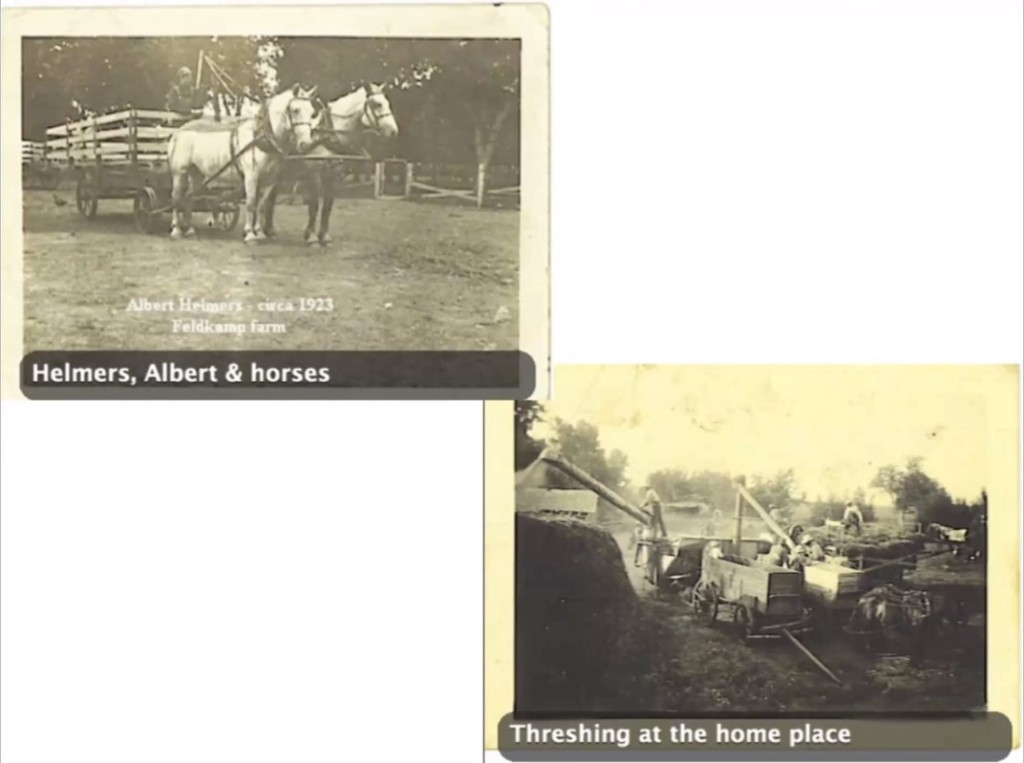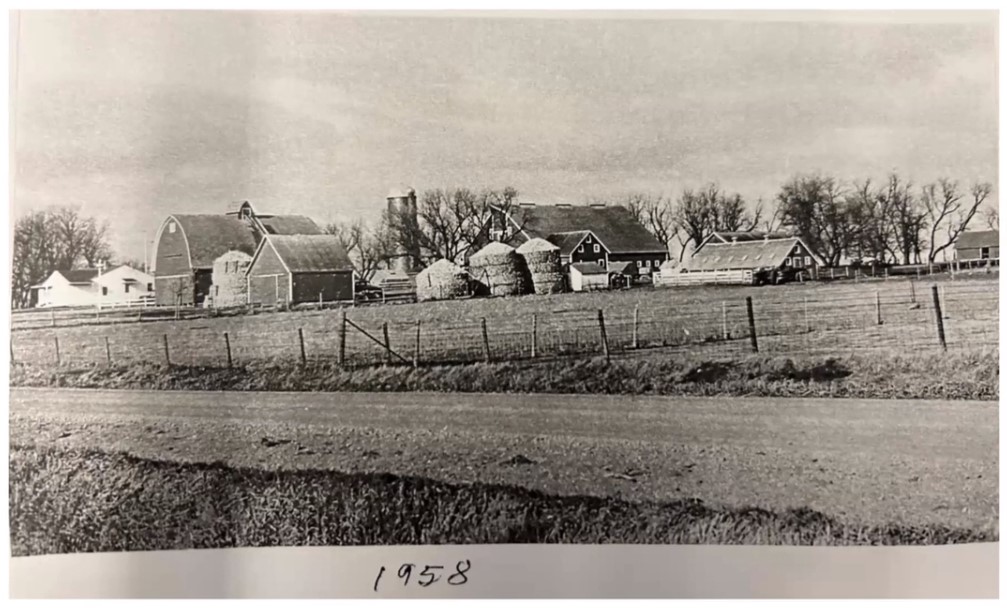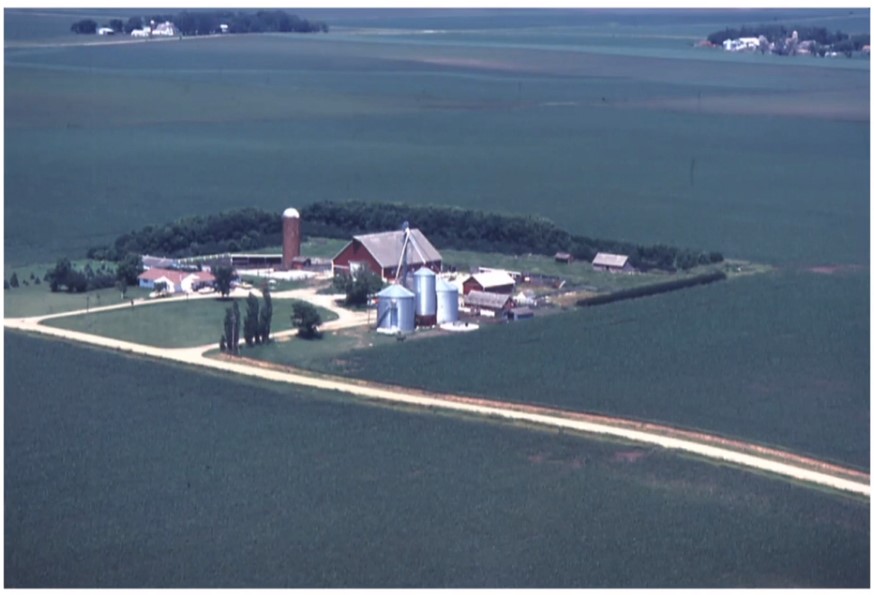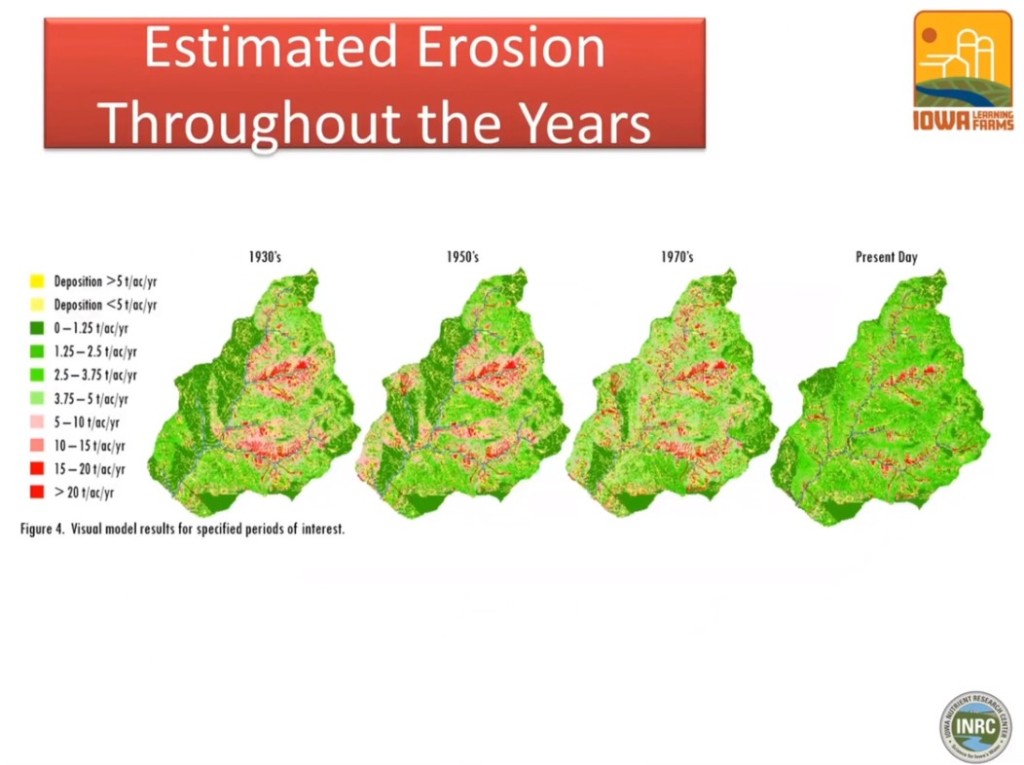
There are mammoth bones under the Iowa farms. We know this because they have been found. Last December, a farmland auction in Muscatine County received some local media attention after sellers revealed that they had once discovered a mammoth femur by a creek after flooding. According to that article, “Archeologists confirmed the discovery, yet refrained from further excavation given the commonality of mammoth remains in the region.” Mammoths are just one of many Pleistocene mammals whose remains have been unearthed in Iowa, including saber-tooth cats, mastodons, 8 ½ ft. long American cheetahs, dire wolves, and giant ground sloths. The result of paleontology going back more than a century, “over a million specimens” are now held at the University of Iowa Paleontology Repository.
I wonder: is Iowa culture at all shaped by the knowledge that there are mammoth bones under the Iowa farms? What does it mean for a society to know this? How might it change behavior, reasoning, values, or other social factors? If I am cooking in a kitchen, I won’t often actively remember that there is a fire extinguisher tucked out of sight under the sink, but it does make me less afraid of a stovetop fire. Children can’t really see or hear monsters under the bed, but they can still lose sleep when haunted by them. When the ancient bones of lost megafauna shake themselves loose from the Iowa soil, what impact is had on Iowa culture?

I have a thought. It’s not a theory, not even a hypothesis, just a thought. Are mammoth bones one of a handful of factors that contribute to Iowa culture being more concerned with glaciation, “Ice Ages”, and the idea of dramatic, cyclical climatic change? It’s anecdotal, but interviewing farmers around Iowa, one thing that has been remarkable to me is the frequency with which long-melted continental glaciers are raised in conversation, particularly regarding climate change.
Of course, we know that understanding both the shape of the Iowa’s regional landscapes and its soil composition requires recognition of “glacial activity,” ~2 million years of ice episodically advancing and melting that most recently occurred 12,000 – 14,000 years ago and ultimately formed the Des Moines Lobe among other foundations of Iowa. To reckon with the geological scales on which the term “glacial dynamics” makes sense is boggling and humbling. Yet, it’s essential knowledge. Iowa was made by ice.
There is a decent bit of social scientific research on the cultural significance of glaciers. The Iowa ice may be long melted, but elsewhere, rapid glacial retreat alongside the Earth’s warmest recorded annual temperatures raises alarm about the transformation of landscape and therefore the transformation of local culture. Allison (2015) writes, “the loss of glaciers represents not only a loss of water and livelihoods, but also a rupture in the social and moral fabric of society. […] such changes can have profoundly dislocating and long-lasting negative effects.” (p. 502). As Carey et al. (2016) simply put it, “Ice is not just ice” (p. 787).
It’s estimated that humans followed the retreating glaciers into Iowa about 11,000 years ago, and it’s thought that these populations were sustained by mammoth hunting. In other words, for thousands of years, Iowa was home to people for whom mammoths and glaciers would have been among the foremost objects of cultural significance. That cultural significance, constructed over the same timescale, still exists for many cultures for whom local ice is now threatened with disappearance. Consider for example that the ice atop the western summit of Kilimanjaro is known as the “house of god” (Allison 2015) or that the agricultural practices of Peru have long relied on the ice atop the Andes mountain range. You might imagine the cultural sorrow and alarm at rapid change to these systems, especially if that change is understood to be anthropogenic.

“Ice is not just ice.” Melting is not just melting. So, Iowa mammoth bones are not just mammoth bones…? Maybe it’s a stretch, but I do wonder if the Iowa of melting ice and woolly mammoths that geology and paleontology gives us a window into doesn’t provide a context in which climatic change seems normal, inevitable, cyclical, even passively benevolent. Again, it’s anecdotal, but much (not all) of what I’m hearing from farmers so far in Iowa about climate change isn’t sorrow or alarm. It’s sort of wistful and resigned, like a headshaking shrug.
If (1) there are patterns in cultural responses to exogenous forces like climate change and (2) these patterns are directly or indirectly informed by the historical and environmental conditions from which a culture emerges, then just as we should expect communities living under retreating glaciers to express a contextually rational alarm, we might also expect communities living where transformative past climatic change appears to resemble current climatic change to express a contextually rational unworried knowingness. Do the ghosts of Iowa’s ancient mammoths subtextually impose themselves? Do they collectively murmur something inaudible yet nevertheless evocative about the impermanence of the Holocene and the inevitability of a return to ice? And does this evocation, in however small a way, shape contemporary Iowa discourse about climate change?
References
Allison, Elizabeth A. “The spiritual significance of glaciers in an age of climate change.” Wiley Interdisciplinary Reviews: Climate Change 6.5 (2015): 493-508.
Carey, Mark, et al. “Glaciers, gender, and science: A feminist glaciology framework for global environmental change research.” Progress in Human Geography 40.6 (2016): 770-793.




















